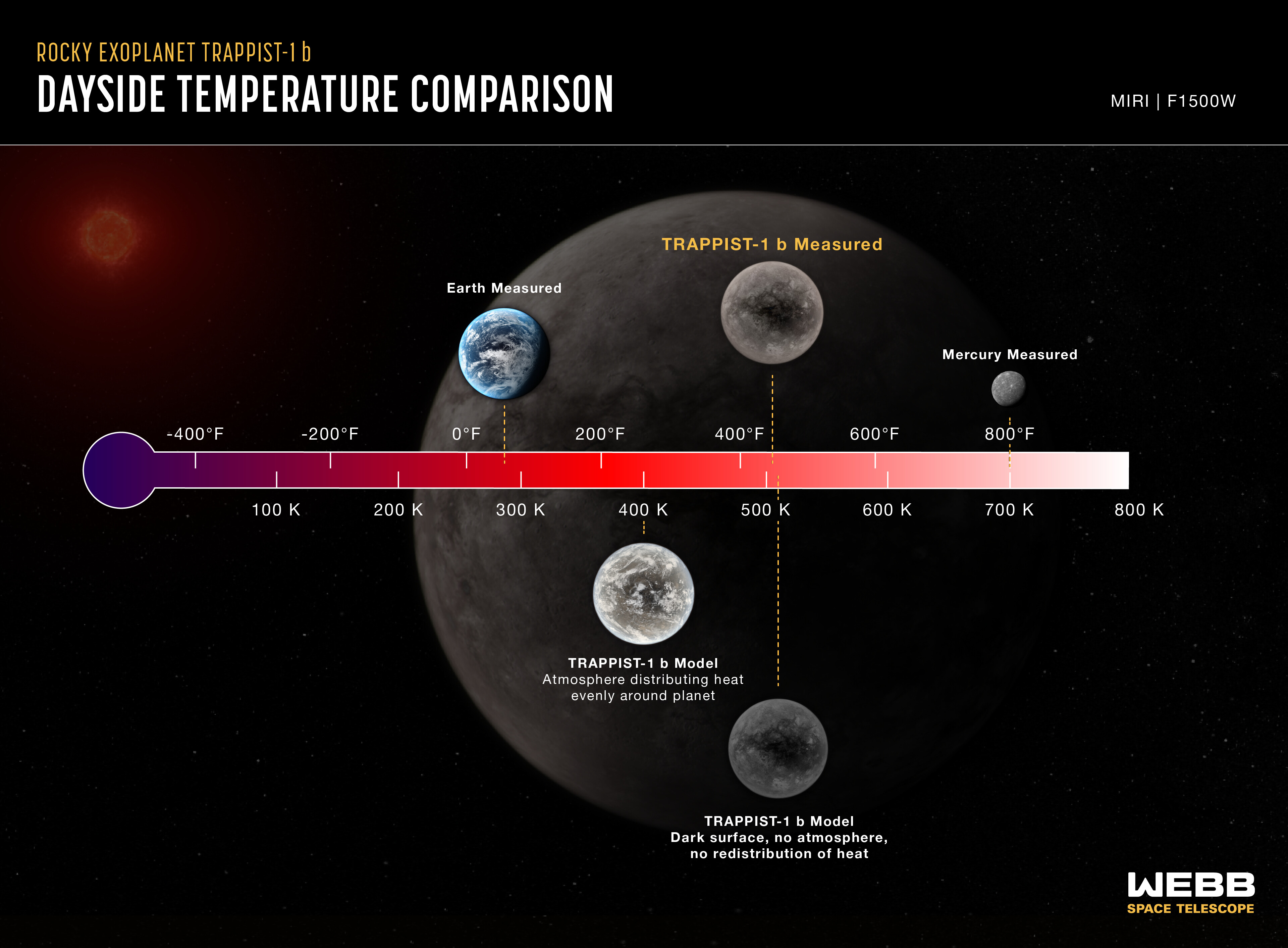Astronomers have used James Webb to measure the temperature of a rocky exoplanet known as Trappist-1 b, a new posting from the European Space Agency reports. While the exoplanet is located 40 light-years from Earth, astronomers were able to utilize Webb’s MIRI (Mid-Infrared Instrument) to detect the temperature of Trappist-1 b.
Using MIRI, the team observed Trappist-1 b’s thermal emission – heat energy that is given off as infrared light. This discovery is extremely notable because it is the first time that we have detected the light off of an exoplanet the same size and temperature as the rocky planets that are found within our own solar system. By using Webb to measure an exoplanet’s temperature, astronomers have opened new doors to how we explore the planets we discover in our universe.
This technique will also prove extremely useful in how astronomers look for planets that can sustain the types of atmospheres needed to support any kind of life. While we have relied heavily on the habitable zone of stars, being able actually to measure exoplanet temperatures using Webb will help us determine if the atmosphere of a planet is actually likely to support life of any kind.

“These observations really take advantage of Webb’s mid-infrared capability,” Thomas Greene, an astrophysicist at NASA’s Ames Research Center, said in a statement. Greene is also the lead author of a new study detailing how the astronomers used Webb to measure the temperatures on the exoplanet. “No previous telescopes have had the sensitivity to measure such dim mid-infrared light.” Greene continued.
Measuring the temperature of an exoplanet’s atmosphere using Webb is a huge milestone and one that no doubt we will continue to see astronomers taking advantage of as the space telescope continues its science missions. However, it’s also essential to consider everything else that Webb is capable of.
For example, the space telescope is capable of not only capturing beautiful images of cosmic objects like the Pillars of Creation, but Webb can also “see” dark matter, which could help us uncover even more about the mysteries of the universe. Of course, that doesn’t discount the usefulness of Webb being able to measure exoplanet temperatures by any means – it just means the telescope has many ways we can use it.








